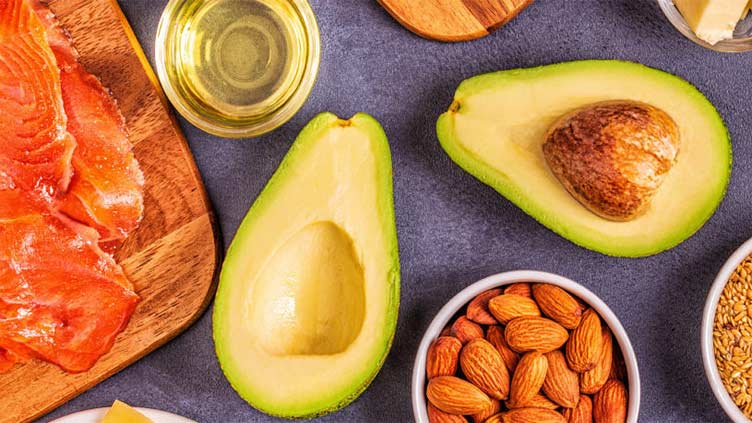Is the ketogenic diet right for autoimmune conditions?

We are still uncovering the exact mechanisms behind why and how this diet works.
ISLAMABAD, (Online) - The ketogenic diet has been the center of some controversy over the years. It is characterized by a very low consumption of carbohydrates—less than 50 grams a day—offset by a higher proportion of fat. Its opponents often demonize it for cutting out whole food groups while its advocates maintain that its benefits outweigh the risks.
However, apart from its well-studied benefits in managing epilepsy in children, evidence for its other potential advantages—such as reducing inflammation—has remained scarce, at least in humans.
What’s certain for now, however, is that we are still uncovering the exact mechanisms behind why and how this diet works and impacts health.
In the latest installment of our In Conversation podcast, we discuss the benefits and drawbacks of following a ketogenic diet while diving into how the diet may potentially impact autoimmune conditions such as lupus, with Dr. Susan A. Masino of Trinity College, Vernon D. Roosa professor of Applied Science, and author of “Ketogenic Diet and Metabolic Therapies: Expanded Roles in Health and Disease” weighing in as an expert, and Shea, who has trialled the diet with his lupus, sharing his personal experience.
You can listen to this month’s episode below, or on your preferred streaming platform:
How keto came to be
In 2021, the ketogenic diet officially marked its 100th anniversaryTrusted Source. In the 1920s, the keto diet was introduced as an alternative therapy to help children with epilepsy after doctors saw that mimicking the metabolism of fasting not only improved symptoms but also helped control seizures.
“[The diet] was used to try and treat epilepsy because it had been observed when people who had seizures didn’t eat [carbohydrates] the seizures would stop. But, of course, that wasn’t sustainable. So, it was sort of developed to try and further explore this therapeutic potential of fasting, in epilepsy. It was effective in adults and children,” said Dr. Masino.
Mimicking ‘starvation’
Keto’s main mechanism of action is via prompting the body to switch into a different energy-forming process—using fat rather than simple carbohydrates (such as glucose and fructose) and complex carbohydrates (such as starch and dietary fibers) as its primary source for fuel.
When the liver starts breaking down fats, it starts producing chemicals called ketones. When the level of ketones in the blood reach the appropriate level, and the body relies on fat, or specifically ketone bodiesTrusted Source, for energy, it enters a metabolic state called ketosis.
“[W]hen you have restricted carbohydrates, or just insufficient calories, you will start generating ketone bodies instead of glucose. And so your body will be using these ketones for fuel,” explained Dr. Masino.
The keto diet, in a sense, stresses the body initially, which sparks a protective response much like exercise does to muscles. As a result, it reduces inflammation, oxidative stressTrusted Source, and sensitivity within the nervous system— all of which can help with managing chronic pain.
Dr. Masino underscored that it isn’t always necessarily ‘a stress-inducing state’ for the body when it produces ketones, and evolutionarily, humans have experienced this state quite frequently when there was less available food.
She added that the body can start generating ketones even in “a relatively short duration of insufficient calories or restricted carbohydrates.”
“I think the best way to think about how a ketogenic diet works is that it works in many ways, on many different cellular processes, and tissues in the body. And that makes it difficult to study and nail down what is the mechanism, but also makes it very powerful in that it has a number of different mechanisms.”
— Dr. Susan A. Masino
Multiple mechanisms of action
Using food—the fuel we use for many metabolic processes in the body—as potential treatments for metabolic-related disorders or chronic conditions is nothing new.
Dr. Masino elaborated on the multiplicity of mechanisms of the keto diet:
“[It may] address a number of different conditions because it can increase energy production, reduce inflammation. [A] lot of my work has been centered on adenosine, which is a really interesting molecule that is involved in communication between nerve cells—it’s involved in energy cycles, it can impact DNA methylation.”
She added that the ketogenic diet increases production of adenosine.
Although many people report rapid weight loss while on a keto diet, the reverse—in less extremes—has also been true.
“[W]hat’s been amazing to me is that this kind of ketone-based metabolism seems to help people who are overweight to lose weight. But it [also] helps people who are underweight or animal models that suffer from underweight to maintain and stabilize their weight. So it’s not always a weight loss diet,” said Dr. Masino.
Dr. Masino believes the keto diet may help restore a state of physiological balance.
“It’s almost something that I think through this multiplicity of mechanisms [that] is helping your body to get to its sort of ideal physiological state, where it is then more resilient to other stresses that may come in on it,” she said.
“[If] you have a more resilient physiology that’s less inflammatory, has great mitochondrial energy production—which the ketogenic diet absolutely does— then you can fend off assaults from all of the things that our bodies are assaulted with.”


